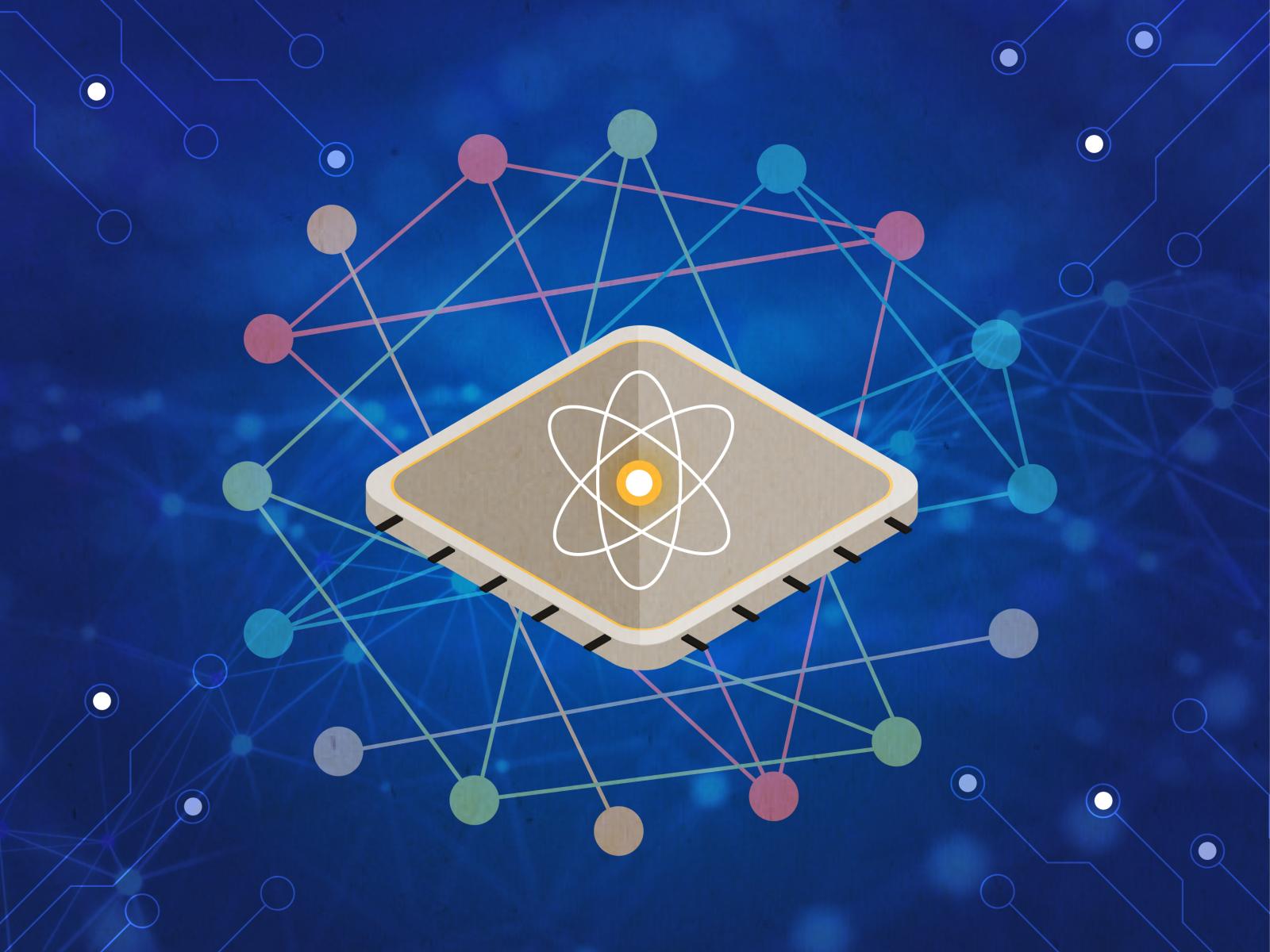A New Approach to Simulating Strongly Correlated Systems with Quantum Computing
Broadening the reach of quantum computers to previously challenging systems with a new approach

Quantum computers can now be effectively used for a broad class of highly accurate, but complex, correlation calculations through a new hybrid quantum-classical algorithm.
(Image by Stephanie King | Pacific Northwest National Laboratory)
The Science
While theoretically powerful, quantum computing approaches are still limited in the types of simulations they can be applied to. Classical approaches to dealing with strongly correlated systems have been previously difficult to deploy with existing quantum algorithms. A new approach allows a quantum algorithm of these classical approaches to simulate strongly correlated systems, even outperforming the classical analog.
The Impact
Researchers tested their new quantum algorithm representing a new approach to simulating strongly correlated systems, producing numerical values. The numerical results are very accurate, with the quantum algorithm exhibiting an improvement over the standard classical approach. This broadens the utility of quantum computing to a larger range of systems. While initial testing specifically looked at simulations of the lowest-energy, or ground, state, the proposed algorithm can be extended to look at more general thermal states. This would allow additional types of one-off and comparison-focused simulations of strongly correlated systems.
Summary
Strongly correlated systems are challenging to model because they include substantial important interactions that increase the complexity of calculations. Previous quantum computing approaches based on low-level theories have been insufficient to produce accurate results for these systems. A newly proposed quantum algorithm, based on a classical approach, enables the simulation of strongly correlated systems via quantum computing. Researchers proposed a method that represents a complex non-unitary interaction as a sum of compact unitary representations. These unitary representations can then be coded into a quantum computer for further simulations. This approach is much more efficient and flexible than the classical method of modeling strongly correlated systems. It works with the type of quantum computer likely to be produced in the near term, which has proven to have limited applications based on current mathematical frameworks and simulation approaches. This new method can be applied to both ground- and excited-state systems, as well as thermal states, increasing its utility.
PNNL Contact
Bo Peng, Pacific Northwest National Laboratory, peng398@pnnl.gov
Karol Kowalski, Pacific Northwest National Laboratory, karol.kowalski@pnnl.gov
Funding
B. P. and K. K. were supported by the “Embedding Quantum Computing into Many-body Frameworks for Strongly Correlated Molecular and Materials Systems” project, which is funded by the Department of Energy, Office of Science, Basic Energy Sciences program, Division of Chemical Sciences, Geosciences, and Biosciences. B. P. also acknowledges the support of the Laboratory Directed Research and Development program from Pacific Northwest National Laboratory, and the support from Q-NEXT, a Department of Energy, Office of Science, National Quantum Information Science Research Center.
Published: January 13, 2023
Peng, B. and Kowalski, K. (2022) “Mapping renormalized coupled cluster methods to quantum computers through a compact unitary representation of non-unitary operators.” Phys. Rev. Res. 4, 043172. [DOI: 10.1103/PhysRevResearch.4.043172]